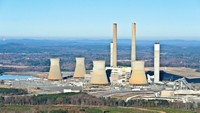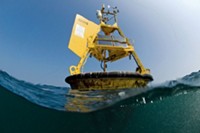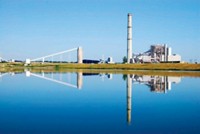Advertisement
Grab your lab coat. Let's get started
Welcome!
Welcome!
Create an account below to get 6 C&EN articles per month, receive newsletters and more - all free.
It seems this is your first time logging in online. Please enter the following information to continue.
As an ACS member you automatically get access to this site. All we need is few more details to create your reading experience.
Not you? Sign in with a different account.
Not you? Sign in with a different account.
ERROR 1
ERROR 1
ERROR 2
ERROR 2
ERROR 2
ERROR 2
ERROR 2
Password and Confirm password must match.
If you have an ACS member number, please enter it here so we can link this account to your membership. (optional)
ERROR 2
ACS values your privacy. By submitting your information, you are gaining access to C&EN and subscribing to our weekly newsletter. We use the information you provide to make your reading experience better, and we will never sell your data to third party members.
Environment
Trump order could impact U.S. energy prices, technology development
Nation will likely fall short of Paris Agreement emissions goal
by Jeff Johnson, special to C&EN
March 29, 2017
| A version of this story appeared in
Volume 95, Issue 14

President Donald J. Trump’s March 28 order to reexamine or kill a host of federal actions to combat climate change might help lower U.S. energy prices but will hurt development of new energy technologies. And it is likely to mean the U.S. will miss its emissions targets under an international climate change accord.
Trump says his directive is an assault on what he calls burdensome energy regulations and policies, most of which are fossil fuel related. He says the order will also create jobs, particularly for U.S. coal miners.
Among policies targeted are the Clean Power Plan to limit carbon dioxide emissions from new and existing coal-fired power plants and regulations to control methane emissions from oil and gas drilling.
The order may contribute to a more diverse and affordable energy supply, says the American Chemistry Council, a chemical industry association. ACC adds that a variety of factors—market forces and state and regional policies, for example—are are likely to drive continued reductions in U.S. greenhouse gas emissions.
But Trump’s policy path will cost the U.S. global energy technology leadership, warns Keith E. Peterman, a chemistry professor at York College of Pennsylvania, a participant in United Nations climate negotiations, and the son of a coal worker. “The rest of the world is moving to a low-carbon future, and we are not going to turn that ship around,” Peterman says.
“Coal jobs are dying because of mining mechanization and a flood of inexpensive, abundant natural gas,” he says. “They are not coming back.”
The order, if fully implemented, would make U.S. compliance impossible with the global Paris Agreement to limit climate change.
An analysis by the consulting firm Rhodium Group finds that Trump’s order is likely to have little impact on U.S. greenhouse gas emissions in the next two years. However, U.S. emissions would end up about 14% below 2005 levels by 2025, the analysis finds. That’s well shy of 26–28% the U.S. agreed to in the Paris deal.
Responding to the executive order, the American Chemical Society says U.S. climate policy is based on “extensive science and an iterative process involving thousands of scientists that span the globe.”
The Administration has a tough road ahead in carrying out the President’s order. A top White House aide acknowledges the difficulty rescinding some of the rules targeted in Trump’s directive, particularly the Clean Power Plan. That EPA regulation was negotiated with states and stakeholders over three years, and the aide predicts a similar time would be needed to eliminate it.





Join the conversation
Contact the reporter
Submit a Letter to the Editor for publication
Engage with us on Twitter